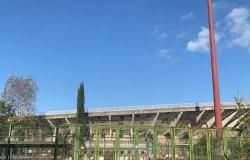
55% of Italians live in regions with satisfactory results for health protection, while for 45% things are not entirely going well. This is the first result that emerges from the analysis of health protection opportunities in the Regions, conducted by 104 experts grouped by Crea Sanità, the Center for applied economic research in healthcare (for which researchers and university professors work in the fields of economics, of law, epidemiology, biomedical engineering, medical statistics) in a multistakeholder panel divided into five groups: institutions, corporate management, healthcare professions, users, medical industry. In detail, the regional analysis shows an Italian territory divided as follows: Veneto, Piedmont, Bolzano and Tuscany (over 13.3 million inhabitants) promoted with overall levels of health protection better than the others and with a performance index that exceeds 50 % of the maximum level (60%, 55%, 54% and 53% respectively). Friuli-Venezia Giulia, Trento, Emilia-Romagna, Liguria, Valle d’Aosta, Marche and Lombardy (19.3 million inhabitants) promoted, but with the “sufficiency” that configures performance levels between 45 and 50 percent. “Postponed” with levels between 37% and 44% Sardinia, Campania, Lazio, Umbria, Abruzzo and Puglia (approximately 18.9 million inhabitants). Highly insufficient (performance level below 35%) Sicily, Molise, Basilicata and Calabria (approximately 7.5 million inhabitants).
Furthermore, in this year, the experts have designed a ‘dynamic’ monitoring system of the effects of differentiated autonomy in Healthcare, based on a subgroup of Performance indicators selected by the Panel in the Crea Sanità 2024 Report “Opportunities for health protection: the Regional Performances”, presented today in Rome.
The analysis indices and their weight
The analysis – which is not limited to the evaluation of health and economic aspects, but also analyzes the social and equity aspects of care – was conducted on the basis of 20 indicators divided into five dimensions: equity, appropriateness, outcomes, innovation, economic -financial and social, and the result gives the real measure of the effectiveness of the organization and the outcomes of social and health care, and will also allow monitoring the effects of the application of differentiated autonomy from the North to the South of the country.
The Appropriateness, Outcomes and Social dimensions contribute over 60% to Performance: 26.6%, 23.9% and 16.2% respectively; followed by the Innovation dimension (11.4%), while Equity and the Economic-financial dimension contribute 11.2% and 10.7 percent respectively.
Outcomes and Appropriateness (the latter with the exception of institutional representatives) are in the top three positions for all categories of stakeholders; the Social dimension also, but with the exception of the representatives of the company Management.
The Equity dimension is in fourth position for all stakeholder categories and the Economic-Financial is among the last two for all categories, with the exception of Corporate Management, for which it is in second place after Appropriateness.
Improvements over the last five years
Since Performance has a dynamic nature, this year the report also offers something new: the medium-term dynamics of health protection opportunities in the Regions: in the last five years there has been a 46% improvement in Performance, which affected all geographical divisions and, to a greater extent, the regions of the South (+75.9% on average), then those of the North-East (+44.9%), those of the North-West (+40.9%) and of the Center (+37.4%). This even though the South is still behind in terms of performance level and its indices, although significantly improving compared to other geographical areas, are still low. In recent years, therefore, according to Crea Sanità, a reduction in distances in terms of health protection opportunities between the South and the North has been achieved. This is also because, although there are margins for action (to reach 100% of the value of the performance index), “it does not seem – we read in the report – that the Regions with better performances are able to record significant progress: probably indicate the existence of structural limits in the current structure of the healthcare system”.
Differentiated autonomy: four groups of Regions compared
As regards differentiated autonomy, Crea has developed the methodology to monitor its effects, and will provide the first results as soon as it is granted to one or more Regions. In the first phase of implementation, the dynamics on ten indicators chosen by the Panel of experts in groups of Regions were calculated and then compared, for the period 2017-2022: the group of Autonomous Provinces/Regions or those with special status (Sicily, Sardinia, Valle d’Aosta, Friuli-Venezia Giulia and Trentino-Alto Adige with Trento and Bolzano) compared with the group of those in the Recovery Plan (Abruzzo, Calabria, Campania, Lazio, Molise, Puglia, Sicily) always towards the others and that of the Regions that requested differentiated autonomy in 2017 (Lombardy, Veneto, Emilia Romagna), once again towards the others. The results were aggregated into “cumulative” areas of improvement and worsening, weighted with the weights attributed to the indicators by the Panel of experts, and were summarized, for each group of Regions proposed for comparison, in a numerical index: the ” Weighted Synthetic Index” (ISP), measure of the relationship between the areas of worsening and improvement in the period considered. The value “0” indicates an overall compensation between the regional improvements and worsening, the value “1” an improvement for all the Regions of the group and “-1” their worsening.
In the first comparison, for the Provinces/Autonomous Regions or those with Special Statute the ISP is 0.38 and 0.40 for the others. Therefore, in the period 2017-2022 the dynamics in the Provinces/Autonomous Regions or with Special Statute was (slightly) worse than in the group of the others. In the second comparison, the Regions in the Recovery Plan recorded an ISP equal to 0.44, towards the 0.37 of the others: the Regions in the Recovery Plan fared better than the others. Finally, in the third comparison, the Regions that requested differentiated autonomy recorded an ISP equal to 0.36 compared to 0.40 of the others.





